Country guides

Things to do in Colombia
Colombia's verdant landscape, gorgeous architecture and mix of cultures make it every bit as appealing as South America's tourism powerhouses, Brazil and Argentina. The country can also lay claim to being a world-class Caribbean destination, courtesy of a coast that covers the Pacific and the Caribbean.
History buffs can visit ancient lost cities in the jungle or admire beautiful colonial architecture around the cities. They can also dig into the different aspects of Colombia's past at a number of intriguing museums. The institutions cover areas such as tango music, pre-Colombian pottery and the country's long civil conflict. Watersports, paragliding and salsa dancing may appeal to energetic travellers, while the county's sparkling beaches are a sunbather's paradise.
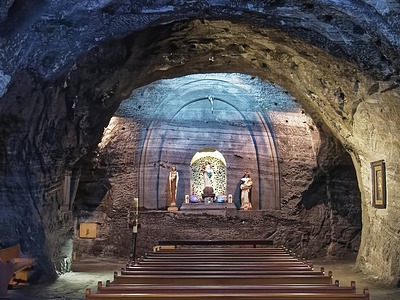
Zipaquira
Zipaquira is one of the oldest cities in Colombia and the most popular day trip from Bogota. The charming colonial town was an important centre for the salt trade, when it was inst…
Zipaquira
Zipaquira is one of the oldest cities in Colombia and the most popular day trip from Bogota. The charming colonial town was an important centre for the salt trade, when it was instrumental in preserving the food and livelihood of prosperous pre-Hispanic civilisations such as the Muisca. Today, Zipaquira is still known for its salt mines, as well as its underground salt cathedral lying 650ft (200m) underground in salt-mine tunnels. For Colombians, it is a place of pilgrimage where worshippers pray in front of an illuminated cross standing 16ft (5m) high. Travellers should note that Zipaquira has an elevation of 8,690ft (2650m), and that its climate can change a lot within one day.
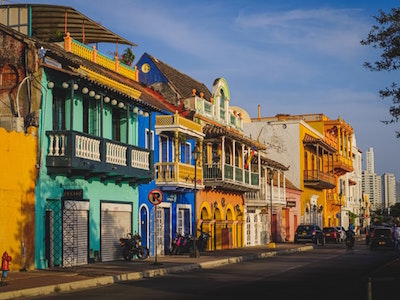
Cartagena
Lush bougainvillea vines line Cartagena's brightly painted buildings and wind through its maze of cobblestone alleys. They are one of many reasons why Colombian and international h…
Cartagena
Lush bougainvillea vines line Cartagena's brightly painted buildings and wind through its maze of cobblestone alleys. They are one of many reasons why Colombian and international holidaymakers flock to this UNESCO World Heritage Site. Its history goes back to 4000BC, and it has since been home to various indigenous peoples and Spanish colonialists. Today, the city's skyline is a blend of modern skyscrapers and intricate colonial facades. Cartagena's colourful past is evident in its many historical attractions. Most are located in the walled Old Town, which contains beautiful examples of colonial architecture, as well as excellent shopping, and restaurants. The Palace of the Inquisition, the dungeons of Las Bovedas and the Cartagena Gold Museum are good places to get a feel for Cartagena's history, while the San Pedro Claver Convent and the Santo Domingo Church offer their own perspective. A number of stately mansions and fortresses (including the impressive Castillo de San Felipe) also dot the area. Cartagena's sparkling beaches remain its most popular attractions, though. The region's resorts off boat tours, watersports and a selection of bars and restaurants. Visitors can take ferries to nearby islands too.
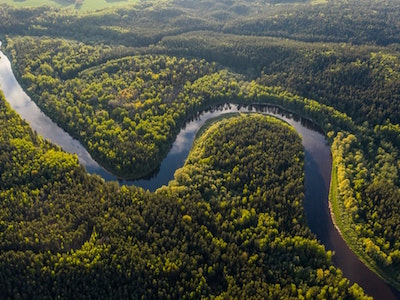
Amazon
The region known to Colombians as Amazonia covers a third of the country's total area. Spread over eight departments, its pristine rainforests have no roads, only fast-flowing wate…
Amazon
The region known to Colombians as Amazonia covers a third of the country's total area. Spread over eight departments, its pristine rainforests have no roads, only fast-flowing waterways and vast tracts of wilderness. Nature lovers will relish the lack of human impact and the degree to which indigenous groups have kept their cultures intact. The relatively undeveloped tourism infrastructure is limited to the towns of Leticia and Puerto Narino. All things considered, Amazonia offers travellers a transcendent experience, from thrilling treks to lying in hammocks as jungle sounds carry them into deep and peaceful sleep.
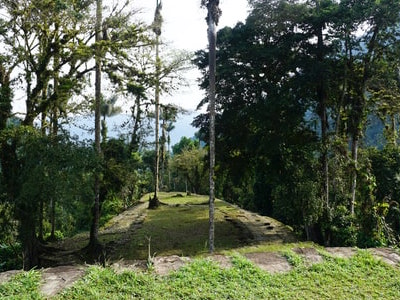
Ciudad Perdida
History buffs should make a point of visiting Ciudad Perdida. The ancient city is far older than Peru's Machu Picchu, swallowed by the jungle around the time of the Spanish Conques…
Ciudad Perdida
History buffs should make a point of visiting Ciudad Perdida. The ancient city is far older than Peru's Machu Picchu, swallowed by the jungle around the time of the Spanish Conquest and only rediscovered in the 1970s. The ruins lie deep in the Sierra Nevada de Santa Marta Mountains and can only be reached on foot. Hikers can look forward to one of Colombia's most thrilling and breathtaking treks, with waterfalls, ancient ruins and indigenous villages forming part of the jungle scenery.
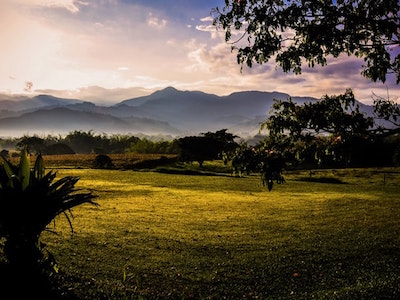
Zona Cafetera
Colombia is renowned for producing some of the world's finest coffee, meaning a visit to the country might be incomplete without a stop in Zona Cafetera. The region comprises the d…
Zona Cafetera
Colombia is renowned for producing some of the world's finest coffee, meaning a visit to the country might be incomplete without a stop in Zona Cafetera. The region comprises the departments of Caldas, Quindio, Risaralda and a small part of Valle del Cauca. Visitors will find a culture that revolves around the precious bean, from jeeps packed with coffee pickers to senior citizens gossiping in cafes over a cup. Tourists can tackle scenic high-altitude hikes, explore the region's charming small villages and learn about the coffee-making process, or enjoy hot-air-balloon flights or paragliding trips. Wildlife lovers should note that Zona Cafetera is home to an impressive variety of birds.
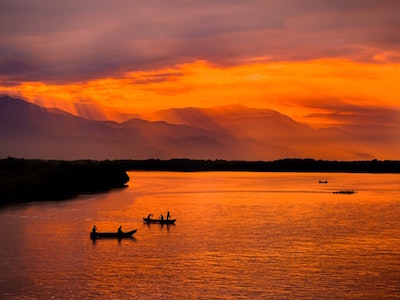
Santa Cruz de Mompox
Situated along the Magdalena River, Mompox is by far the most charming destination in northern Colombia, as well as one of the country's best-preserved colonial towns. Book lovers …
Santa Cruz de Mompox
Situated along the Magdalena River, Mompox is by far the most charming destination in northern Colombia, as well as one of the country's best-preserved colonial towns. Book lovers may note the striking similarities between this remote settlement and Gabriel Garcia Marquez's fictional town of Macondo. Mompox is also the heart of religious tourism in Colombia, where visitors can witness unique traditions such as the Easter processions moving through the city centre's narrow streets. On a more modern note, music lovers should attend Mompox's International Jazz Festival. Held annually in October, it allows local and international artists to play world-class jazz in this magical Colombian setting. Nature enthusiasts should take a boat trip through the Pijino Swamp, which is home to an incredibly diverse range of birds.
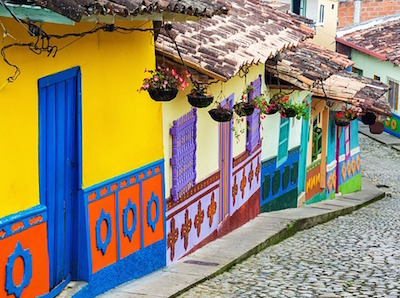
Bogota
Bogota is most visitors' first experience of Colombia, and in many ways encapsulates the attraction, history and modern reinvention of the continent's most tarnished tourism jewel.…
Bogota
Bogota is most visitors' first experience of Colombia, and in many ways encapsulates the attraction, history and modern reinvention of the continent's most tarnished tourism jewel. Founded in 1538, the city is Colombia's financial and industrial centre and occupies a glorious position 8,500 feet (2,600m) above sea level, in sight of the Cordillera mountain range. The city's most attractive and culturally rich area lies near its centre. Called La Candelaria, it is famed for its arts, culture and colonial architecture. The residential portion's clay-tiled roofs and distinctive wooden balconies are very photogenic, while the many cafes, churches and museums reward exploration. The Plaza del Bolivar is ringed with handsome buildings and sites of interest, including the Palace of Justice, Capitol Building and Arzobispal Palace. The nearby Museo del Oro is a fabulous treasure trove of antique gold. Bogota has a hugely vibrant modern side, too. Its gourmet scene and nightclubs are cutting edge, while boutique shops and design centres seem to open weekly.
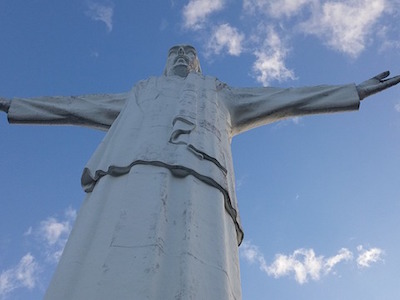
Cali
Cali is a particularly vibrant corner of Colombia, where visitors can encounter an intoxicating blend of Spanish, African and indigenous cultures. They're sure to find the cheerful…
Cali
Cali is a particularly vibrant corner of Colombia, where visitors can encounter an intoxicating blend of Spanish, African and indigenous cultures. They're sure to find the cheerful, open-minded nature of the local Calenos is as memorable as the city's modern-art scene, salsa dancing and historic architecture. The city has some interesting monuments and museums, such as the Museo Arqueologico la Merced, containing a collection of pre-Columbian pottery; and the Museo de Arte Religioso La Merced, with its extensive collection of colonial religious paintings and relics. Travellers can get even more acquainted with local culture by attending Cali's music festivals or trying salsa at one of the city's many dance academies.
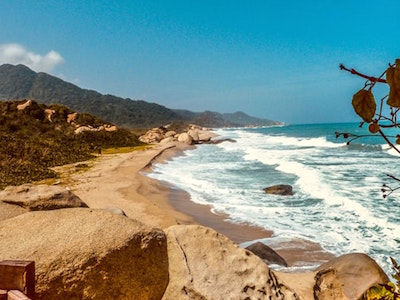
Tayrona National Park
With a terrain of verdant jungle and a population of insects, colourful birds and lively monkeys, Tayrona National Park is a must-see for nature enthusiasts. They might just stumbl…
Tayrona National Park
With a terrain of verdant jungle and a population of insects, colourful birds and lively monkeys, Tayrona National Park is a must-see for nature enthusiasts. They might just stumble upon jaguars, boa constrictors and poison dart frogs. Relaxation seekers should add the park to their itinerary as well, as hikes lead to the Caribbean's white-sand beaches and azure waters. It's the perfect place for swimming and sunbathing, though visitors should remember that only certain beaches permit swimming. Also, Tayrona's location on Colombia's Caribbean coast allows it to enjoy marvellous sunsets and sunrises, with the best ones coming from the beach at Arrecifes or Cabo San Juan. Visitors should definitely hike to the famous Lost City, Pueblito, where archaeological ruins carry the memory of a former Tairona indigenous city, which was built thousands of years ago.
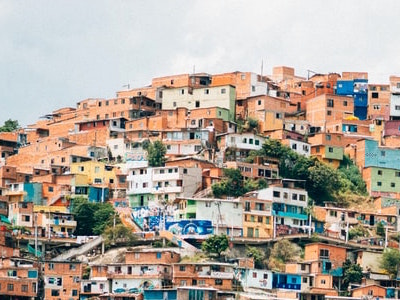
Medellin
Situated in a narrow valley surrounded by jagged peaks, Medellin is Colombia's second largest city and a bustling commercial centre. Its history begins in 1616, when Spanish settle…
Medellin
Situated in a narrow valley surrounded by jagged peaks, Medellin is Colombia's second largest city and a bustling commercial centre. Its history begins in 1616, when Spanish settlers farmed small haciendas in what is today the affluent neighbourhood of El Poblado. The Our Lady of Candelaria of Medellin still stands as a reminder of that time. Visitors can find other remains of colonial roots in the city centre, such as the Casa Gardeliana and the Casa de la Memoria, dedicated to the victims of Colombia's long and brutal civil conflict. Parque Lleras is home to Medellin's most exciting nightlife, though Calle La Treinta y Tres is also worth visiting for its dancing, music and restaurants.


